

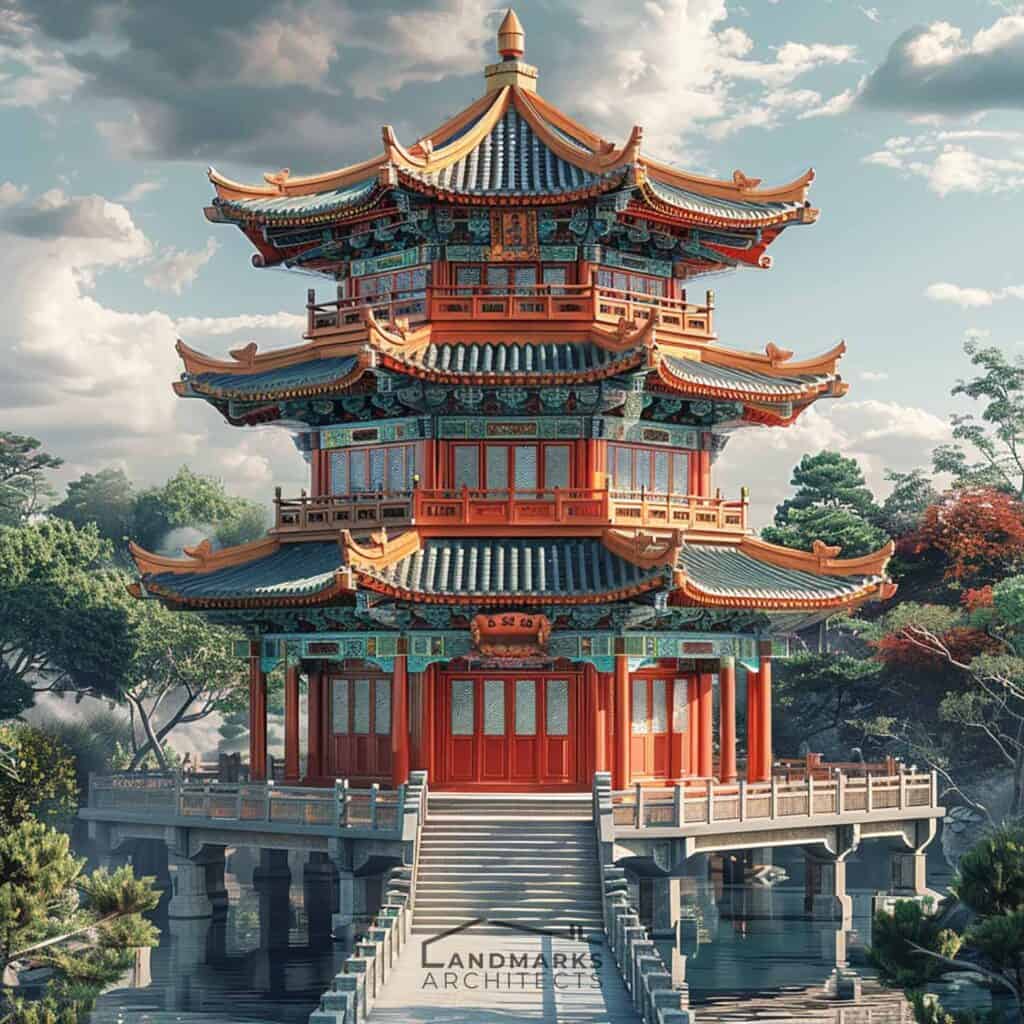

Welcome to an exploration into the architectural landscapes of China and Japan, where the structures stand as a testament to the ingenuity that defines societal identities. This exploration aims to provide a comprehensive understanding of not just the physical manifestations but also the cultural symbolism, historical importance, and environmental considerations that shape the architectural landscapes of these two ancient civilizations.
In the vast history of mankind, architecture emerges as a powerful expression, reflecting the pulse of societies, their values, and their evolution through time. The focus here is on the enduring architectural traditions of China and Japan, and the civilizations that have left an indelible mark on the global cultural landscape. As we navigate through the nuances of these architectural wonders, our aim is to unravel the complex layers that contribute to the richness of these structures.
1. Overview

The architectural fabric of China and Japan serves as a dynamic chronicle of the civilizations that have thrived within their boundaries. More than mere edifices, these structures are conduits that transport us through time, offering glimpses into the soul of societies that have weathered the tides of history. These structures, with their intricate designs and timeless aesthetics, offer poignant glimpses into the cultural mosaic that defines the essence of each nation.
Commencing this exploration demands a nuanced comprehension that extends beyond mere aesthetics. The domain of palace architecture in China and Japan unfolds as a dynamic interplay shaped by cultural, historical, and environmental influences, challenging the perception of static structural manifestations. Every column, arch, and meticulously crafted detail transcends its physical form, becoming a vessel resonating with echoes from bygone eras.
To unravel the depth and significance enshrined in these architectural marvels, one must acknowledge the profound interconnectedness of cultural nuances, historical milestones, and the overarching environmental ethos. Within these structures, featuring palace architecture, thatched roofs, and other buildings adorned with intricate designs and timeless aesthetics, one discovers poignant glimpses into the cultural mosaic that defines the essence of each nation.
2. Historical Context
Architecture, as a reflection of cultural and historical evolution, plays a pivotal role in understanding the essence of civilizations. The architectural marvels of China and Japan stand as testaments to rich histories, shaped by unique cultural, philosophical, and political influences. In this exploration, we explore the historical context of Chinese and Japanese architecture, uncovering the distinctive features that have defined these traditions over the ages.
1. Chinese Architecture
1. Ancient Chinese Architecture (Pre-Imperial Period)

The roots of Chinese architecture trace back to ancient times, long before the establishment of formal dynasties. This period, characterized by varied regional influences, laid the groundwork for the architectural language that would later define China. Wooden structures, intricate carvings, and symbolic roof designs were notable features of ancient Chinese architecture, with a focus on harmony with nature.
2. Imperial Era Architecture (Han Dynasty, Tang Dynasty, Ming Dynasties)

The imperial era ushered in a new chapter for Chinese architecture, marked by the construction of grand palaces, temples, and city walls. The Han, Tang, and Ming dynasties each left an indelible mark on the architectural landscape. The grandiosity of the Forbidden City and the engineering marvel of the Great Wall exemplify the heights of imperial-era architecture, showcasing advanced construction techniques and an unwavering commitment to cultural expression.
3. Influences of Confucianism, Taoism, and Buddhism on Architecture

Chinese architecture is deeply intertwined with philosophical and religious ideologies. Confucianism, Taoism, and Buddhism have played pivotal roles in shaping the aesthetics and design principles of Chinese structures. Temples and pagodas stand as tangible representations of spiritual beliefs, blending seamlessly with the surrounding landscapes.
4. The Impact of Political Changes on Architectural Styles

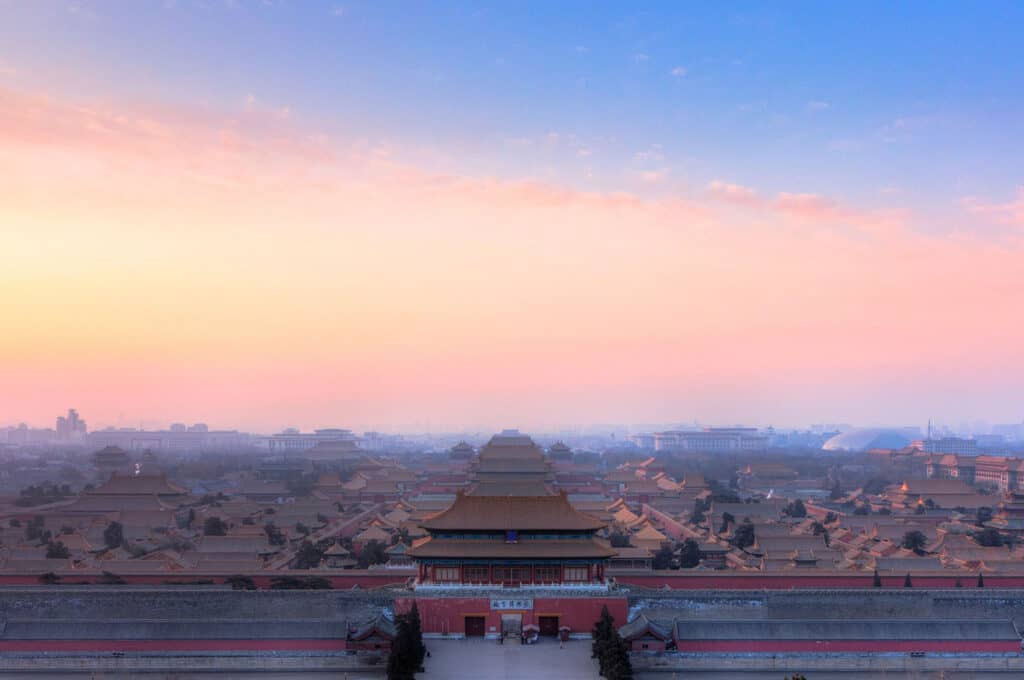
Political transformations in China have exerted a profound influence on architectural styles. The Forbidden City, constructed during the Ming Dynasty, symbolizes the power and authority of imperial rule. Meanwhile, the Great Wall, a colossal fortification built for defense, illustrates how architecture can be a strategic response to geopolitical challenges. These iconic structures serve as enduring symbols of the dynamic relationship between politics and architecture in Chinese history.
2. Japanese Architecture
1. Prehistoric and Jomon Period Architecture
The roots of Japanese architecture can be traced back to the prehistoric Jomon period (approximately 14,000–300 BCE), characterized by its distinctive earthenware and cord-marked pottery. During this era, the Japanese people lived in pit dwellings and semi-subterranean structures, showcasing an intimate connection with nature. The architecture of the Jomon period reflects a harmonious coexistence with the environment and a primitive yet profound understanding of construction techniques.
2. Heian, Kamakura, and Edo Periods’ Architectural Styles
The Heian period (794–1185) marked a significant shift in architectural style, emphasizing elegance and simplicity. Notable structures from this era include the iconic Kyoto Imperial Palace, characterized by its wooden architecture and exquisite gardens. The Kamakura period (1185–1333) introduced the influence of Zen Buddhism, leading to the construction of Zen temples and gardens that epitomize tranquility and contemplation.

The Edo period (1603–1868) witnessed a flourishing of architectural innovation, fueled by economic stability and the peace imposed by the Tokugawa shogunate. Castles, such as Himeji Castle, and merchant houses, exemplified by the Katsura Imperial Villa, showcased the refinement of Japanese architectural aesthetics during this time. The Edo period laid the groundwork for the distinctive architectural features that continue to define Japan’s built environment.
3. Shinto and Buddhist Influences on Japanese Architecture

The profound influences of Shinto and Buddhism have intricately shaped the architectural philosophy of Japan, where the synergy between these two spiritual traditions is most evident. Shinto shrines, known for their simplicity and utilization of natural materials, not only exemplify architectural elegance but also manifest a profound spiritual harmony with the surrounding natural environment. In contrast, Buddhist temples showcase elaborate woodwork, intricate carvings, and tranquil gardens that beckon contemplation.
The synthesis of Shinto and Buddhist influences in Japanese architecture results in a distinctive identity, where the sacred and the aesthetic seamlessly interweave. This shared essence is palpable in iconic structures such as the Japanese pagoda, embodying the amalgamation of spiritual reverence and architectural finesse that characterizes Japan’s rich architectural heritage.
4. The Role of Samurai and Traditional Tea Houses in Shaping Japanese Architectural Aesthetics

The samurai, with their emphasis on discipline and honor, left an indelible mark on Japanese architecture. Castles and residences built for samurai incorporated defensive features while maintaining an air of elegance. The traditional tea house, an integral part of Japanese culture, exemplifies a harmonious fusion of architecture and ceremony. Tea houses, such as the famous Katsura Rikyu, showcase a minimalist approach, emphasizing the beauty of simplicity and the spiritual aspects of the tea ceremony.
3. Architectural Elements and Styles
Chinese Architectural Elements
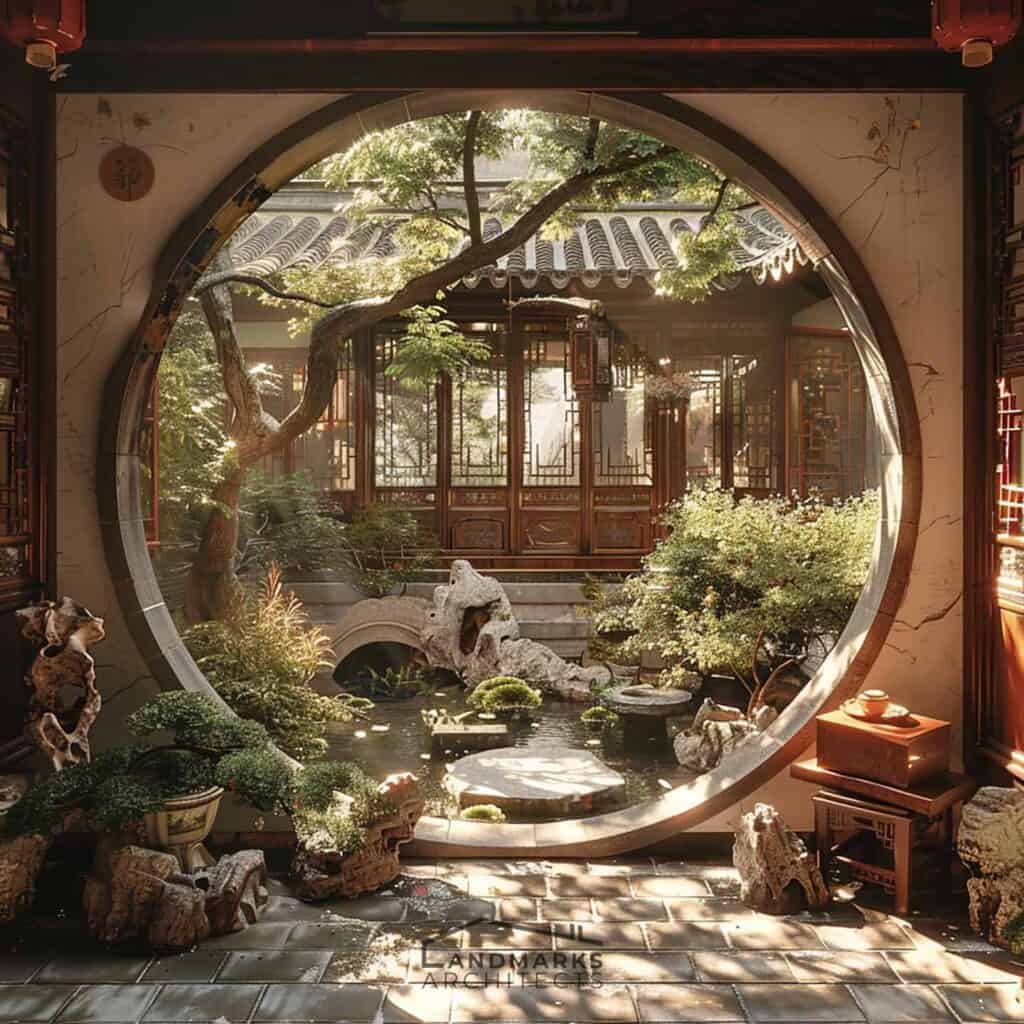
Chinese architecture is characterized by a deliberate blend of symbolism and utility. The roofs are adorned with sweeping curves and intricate details, going beyond mere functional coverings to convey stories of status, power, and purpose. Chinese architects, with meticulous precision, craft courtyards, and gardens that extend beyond aesthetic boundaries, becoming profound extensions of philosophical ideals and connections to the natural world.
Material choices, whether embracing the warmth of wood, the solidity of brick, or the enduring nature of stone, reflect a deliberate commitment to sustainability and exemplary craftsmanship. Rooted in ancient wisdom, Chinese architecture embraces the practice of feng shui, infusing cosmic harmonizing principles into every nook and cranny. This ensures that the built environment resonates with a harmonious balance and purpose, a testament to the enduring legacy crafted by generations of Chinese architects.
Japanese Architectural Elements

Japanese architecture, celebrated for its elegance and simplicity, unfolds a canvas of nuanced elements. Within this architectural domain, the Japanese pagoda, distinctive Japanese roofs, and the delicate artistry of traditional joinery techniques converge to create structures that transcend mere construction.
Tatami mat flooring, sliding doors (fusuma), and Zen gardens are not mere design elements; they serve as portals to a profound spiritual connection with the environment. The precision of traditional joinery techniques stands as a testament to the craftsmanship that transforms each edifice into a masterpiece. The commitment to simplicity is more than a mere aesthetic preference; it is a conscious effort to create spaces that echo the tranquility found in nature, fostering an atmosphere of serene contemplation.
4. Regional Variations
Regional Differences in Chinese Architecture
The expansive terrain of China, marked by varied climates and cultures, gives rise to a rich array of regional variations in architectural design. The imposing structures in the north sharply contrast with the more intricate styles found in the south. These regional disparities serve as glimpses into the essence of various communities, where each architectural design mirrors the distinct identity of its residents.
The contributions of minority ethnic groups add another layer to this mosaic, contributing to a dynamic fabric of architectural expression that mirrors China’s geographical and cultural diversity. One of the most famous examples is the Great Wall, a testament to the ingenuity of Chinese architects in crafting monumental structures that endure through time.
Regional Differences in Japanese Architecture
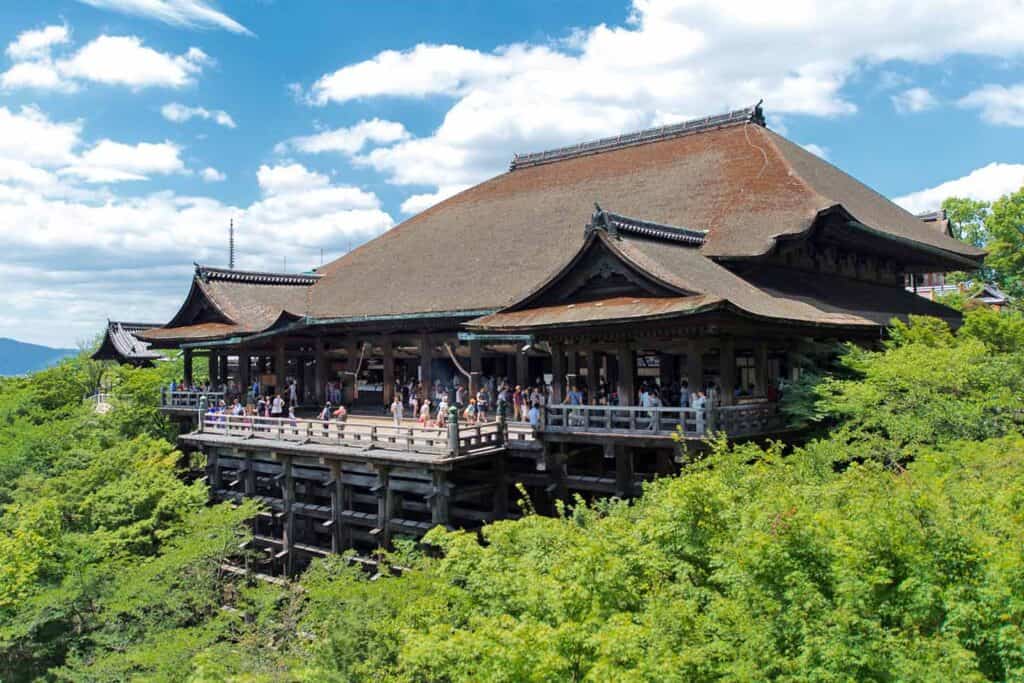
Japanese architecture shares a rich mosaic of variety, reflecting the topographical nuances of its islands across varied regions and historical contexts. The historical allure of Kyoto, characterized by its temples and shrines, contrasts sharply with the pragmatic structures of Edo. In the southern archipelago of Okinawa, a unique blend of cultural influences adds a distinctive layer to the broader Japanese architectural narrative.
Within this architectural design, regional variations serve as a testament to the adaptability and resilience of Japanese civilizations over time. One of the most famous examples of Japanese architecture that encapsulates these assorted influences is the iconic Japanese pagoda.
5. Modern and Contemporary Trends
Evolution of Chinese Architecture in the Modern Era

The passage through time brings us to the modern era, where China’s architectural landscape undergoes a profound transformation. The impact of Western influences, coupled with the relentless wave of globalization, shapes a landscape where ancient traditions seamlessly coexist with cutting-edge modernity.
Skyscrapers pierce the sky, and urban planning becomes a canvas for envisioning the future while honoring the past. The juxtaposition of ancient philosophies with the pragmatism of contemporary design creates a dynamic tension that defines the architectural ethos of modern China.
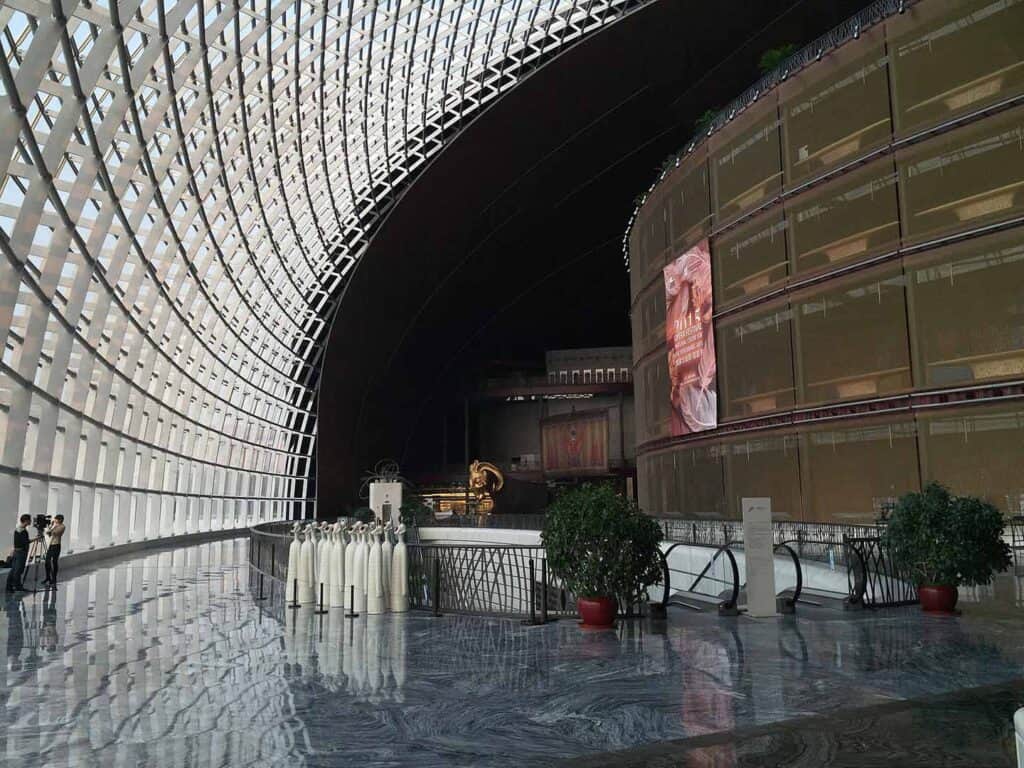


As the nation embraces rapid urbanization and technological advancements, architectural design becomes a focal point in shaping the contemporary skyline. Chinese architects, drawing inspiration from traditional elements, navigate the challenges of incorporating modern aesthetics while preserving cultural identity. The use of innovative building materials and construction techniques stands out, marking a departure from traditional approaches.
Notably, official buildings epitomize this evolution, showcasing a synthesis of traditional Chinese architectural principles and cutting-edge design. Among the most famous examples is the iconic National Centre for the Performing Arts in Beijing, with its futuristic design harmoniously integrated into the historic landscape. This architectural evolution signifies a transformative progression, where Chinese architecture continues to redefine itself, embracing the demands of the modern era while honoring its rich heritage.
Evolution of Japanese Architecture in the Modern Era

Post-war reconstruction and modernization propel Japan into a new era of architectural innovation, witnessing a profound transformation in the landscape of Japanese architecture. This evolution is marked by a thoughtful fusion of traditional elements and modern functionality, creating a harmonious coexistence between the past and the present.
Architects and urban planners engage in a delicate dance, striving to meet the evolving societal needs while preserving the cultural roots that define Japan’s architectural identity. This nuanced approach involves a careful selection of building materials that not only cater to contemporary demands but also pay homage to traditional craftsmanship. The use of innovative materials and construction techniques becomes a hallmark of this era, emphasizing sustainability and resilience.

One of the most famous examples of this transformative experience is evident in the iconic Tokyo Skytree. Standing as a testament to contemporary Japanese architectural prowess, the Skytree seamlessly integrates cutting-edge design with traditional influences, reflecting the nation’s commitment to both progress and heritage.
As Japan progresses, its architectural landscape reflects a delicate balance between adopting modern advancements and preserving historical treasures. This intricate interplay between architectural design, building materials, and cultural preservation symbolizes Japan’s ability to adapt, innovate, and showcase a unique blend of tradition and modernity in the ever-evolving world of architecture.
6. Cross-Cultural Influences
Chinese Influence on Japanese Architecture

The pages of history unfold tales of cultural exchange and influence between China and Japan, leaving an indelible mark on architectural structures. Historical trade routes and exchanges birthed a fusion of ideas, with Japanese pagodas and roofs bearing the unmistakable imprint of Chinese influence.
The adoption of certain architectural elements serves as a bridge connecting two distinct yet interconnected worlds. From the minutiae of design details to the overarching principles of urban planning, the pervasive influence of Chinese architectural aesthetics in Japan is exemplified.
Chinese influence on Japanese architecture is deeply rooted in centuries of cultural exchange and historical connections. Throughout various periods, Japan has drawn inspiration from Chinese architectural elements, adapting them to suit its unique cultural context.
Notable influences include the incorporation of traditional Chinese building techniques, structural designs, and decorative motifs into Japanese architecture. The interplay between Chinese and Japanese architectural styles is evident in the construction of temples, palaces, and even residential buildings.
One of the most famous examples highlighting Chinese influence is the Tōdai-ji temple in Nara, which echoes the grandeur of Chinese architecture while infusing distinctive Japanese elements. This cross-cultural exchange has not only enriched the architectural landscape of Japan but also demonstrates the enduring impact of Chinese aesthetics on the evolution of Japanese architectural identity.
Japanese Influence on Chinese Architecture
The interplay between Chinese and Japanese architecture has cultivated a cross-cultural exchange that echoes through the centuries. Japanese influence on Chinese architecture is palpable, as each nation has left indelible marks on the other’s-built environment.
Chinese architecture, steeped in rich traditions and adorned with grand structures, has gracefully assimilated elements inspired by Japanese aesthetic principles. This cross-pollination materializes in the meticulous design and spatial arrangements observed in Chinese temples and gardens, embodying a harmonious blend of both cultural sensibilities.

Similarly, Japanese architecture, known for its minimalist elegance and harmony with nature, has influenced certain aspects of Chinese design philosophy. The most famous example of this cultural symbiosis can be witnessed in the incorporation of Japanese-style gardens within traditional Chinese estates.
This dynamic interchange not only enhances the intricate architectural fabric of both nations but also stands as a testament to the shared history and mutual respect that underpins their enduring cultural connection. As architectural influences continue to crisscross between China and Japan, the built environments of both countries serve as living testaments to the enduring legacy of this profound cross-cultural exchange with their Chinese counterparts.
Chinese vs Japanese Architecture: A Recap
In conclusion, this comparative exploration unveils a fascinating journey through the rich cultural landscapes of both nations. While Chinese architecture stands as a testament to its grand traditions, exemplified by ancient structures and meticulous designs, Japanese architecture, with its minimalist elegance and harmony with nature, presents a unique aesthetic philosophy. The interplay between Chinese and Japanese architecture reveals a cross-cultural exchange that transcends boundaries and enriches the built environments of both nations.
Chinese architects have absorbed elements from Japanese aesthetics, creating a synthesis that adds nuance and depth to the architecture. Simultaneously, Japanese architecture has left its mark on certain aspects of Chinese design philosophy, showcasing the adaptability and fluidity of cultural interactions. As we navigate the intricacies of these architectural traditions, it becomes evident that Chinese and Japanese architecture share not only a history of mutual influence but also a profound interconnectedness that continues to shape their enduring cultural connection.










